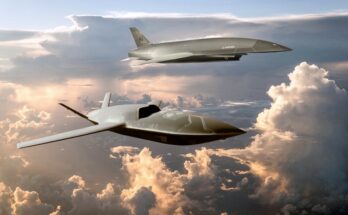Poland plans on fielding a bigger, stronger military over the coming decade and is prepared to support its aspirations with matching funding. The intention of having a formidable national defense component that serves both as a deterrent to any aggressive designs by a peer competitor (see: Russia) and as a major contributor to NATO- and EU-led missions is a goal broadly shared across the Polish political spectrum.
Since December 2012 when the former Civic Platform (PO) government unveiled a revised 10-year military modernization plan titled the “Technical Modernization Plan for the Polish Armed Forces 2013-2022,” Poland has remained determined to improve its military capability.
Having joined NATO in 1999, followed by entry into the European Union in 2004, Poland achieved two core foreign policy goals.
But two issues remained on the security front: the historic mistrust and fear of revanchist Russia, and the atrophying state of the Polish armed forces. Despite its accession into NATO, the latter issue naturally amplified the former in the minds of Polish officials.
After spending much of the early 2000s focusing on shrinking and professionalizing the armed forces, the Polish Defense Ministry eventually turned its attention to a long-overdue modernization of military weaponry.
The resultant Technical Modernization Plan provided a roadmap for revamping the Polish military with more technologically advanced, Western-sourced hardware. The plan was paired with a government pledge of PLN140 billion ($43 billion in 2012 value, $37 billion in current value) in total funding for military capital investments.
The capital investments envisioned under the Technical Modernization Plan included a broadly ambitious naval modernization effort, the construction of a national air and missile defense system (“The Shield of Poland”), investments in cyber defense and C4ISR, and purchases of combat support and multirole helicopters, light tanks, more Rosomak armored vehicles, medium-altitude long-endurance (MALE) unmanned drones, fixed-wing aerial tanker-transports, and eight M-346 Master advanced jet trainers.
This broad outline would, if carried out fully, provide Poland with one of the most modern, capable armies in Europe.
But then in October 2015, a new government came to power in the form of the more conservative and Russia-skeptic Law & Justice (PiS) Party. This government immediately began to look with a skeptical eye at the Civic Platform’s earlier procurement decisions, such as the selection of Airbus Helicopters’ H225M Caracal to meet a medium-lift utility helicopter requirement.
One thing that stood out to PiS officials holding the defense portfolio was the gap between aims and means – in other words the distance between outlining a procurement priority and providing necessary funding to meet the full scope of the acquisition.
The new defense minister, Antoni Macierewicz, announced in April 2016 that the previous government’s funding outline for the 2013-2022 Technical Modernization Plan would fall short by a staggering PLN105 billion ($27.6 billion) if each and every planned acquisition were to be carried out. Macierewicz claimed that the previous government had not taken into account the full life-cycle costs for the acquisitions laid out in the modernization plan.
Against this backdrop, the PiS government set out to re-examine and revise some procurement priorities laid out in the Technical Modernization Plan , updating it to reflect the remaining 2017-2022 time period, and, with an eye on shifting dates, scrapping some requirements and accelerating others.
Finalizing and unveiling an updated plan, however, fell victim to delays caused by the drafting of a Strategic Defense Review (required as a preceding document to an updated Technical Modernization Plan) and a change in leadership at the Ministry of National Defense in January 2018, with Mariusz Blaszczak succeeding Antoni Macierewicz as ministry head.
Thus with an announcement on February 28 of the signing of a new Technical Modernization Plan, the clock begins ticking on the PiS government’s stated intention to move forward with procurement projects at a faster pace than previously conducted.
During his announcement, Blaszczak noted the elevated cost of the latest plan compared to the previous iteration, with the latest version coming in at a total PLN185 billion ($48.75 billion), making it PLN45 billion ($11.8 billion) higher in expenditure value.
The core programs outlined in the updated Technical Modernization Plan 2017-2026 include:
- Kruk: Replacement of the Polish Land Forces’ fleet of Soviet-legacy, 1970s-vintage Mi‑24 “Hind” assault platforms with new-build attack helicopters.
- Harpia: Acquisition of 32 new-generation multirole jet fighters intended to replace the last of the Polish Air Force’s Soviet-legacy combat aircraft, which include MiG-29 Fulcrums (used in the air-to-air role) and Sukhoi Su-22 Fitters (used in air-to-ground missions).
- Flame: Acquisition of reconnaissance aircraft.
- Plomykowka: Procurement of maritime patrol aircraft.
- Gryf: Procurement of 12 medium-range combat-enabled unmanned aerial vehicles.
- Wazka: Acquisition of observation micro-UAVs intended for operating in urban landscapes.
- Wisla: Purchase of a medium-range anti-aircraft/anti-missile system.
- Orka: Procurement of a new submarine type capable of combating targets under water, on the surface, and on land.
- Miecznik: Addition of a coastal defense vessel.
- Narew: Acquisition of a short-range air defense system (SHORAD).
- Cybermil: Acquisition of modern cryptographic and IT hardware to carry out cyberspace operations (allocation of PLN3 billion).
- Borsuk: Indigenous development and procurement of a universal modular tracked chassis that will serve as a modern combat vehicle replacement for the Polish Army’s aging BMP-1 armored infantry fighting vehicles. Amphibious capability will form part of this vehicle’s mission.
- Homar: Acquisition of indirect-fire long-range multiple rocket launcher systems capable of striking at targets from a range of up to 300 kilometers.
- Hust: Introduction of lightweight, easy-to-use anti-tank guided missile (ATGM) systems into operational service.
- Mustang: Acquisition of 882 new-build 4×4 high-mobility vehicles – both armored and unarmored – in multiple variants to replace the legacy Honkers cars built locally.
- Regina: Acquisition of Krab 155mm howitzer modules.
- Rak: Procurement of 120mm self-propelled automated mortar systems in both truck-mounted and tracked variants from an indigenous consortium composed of Huta Stalowa Wola (HSW) and Rosomak.
These projects illustrate the wide-ranging requirements and goals of Poland’s military modernization plan. Every domain of the prospective battlespace – air, land, sea, and cyberspace – is slated for investment through 2026 under the updated Technical Modernization Plan. Improved combat support firepower, a layered modern air defense network, and a stronger naval component are all of critical focus under the latest plan.
Poland wants to buy fifth-gen fighters under $49B modernization program https://t.co/MySFkiFFMf pic.twitter.com/tjKuytCczm
— Defense News (@defense_news) February 28, 2019
Knitting together a stronger Polish military component and domestic defense industry remains a cornerstone of Warsaw policymakers regardless of government; therefore, any tender often comes with contractual obligations for a foreign original equipment manufacturer to provide for local work share or technology transfer if a local vendor is incapable of meeting the technical requirements of a specific tender.
What is truly noteworthy is that the scope and the financial commitment toward defense pledged by Poland dwarf those of most European members of NATO.
While priority is being given to territorial defense, particularly in the northeast of the country where a new Polish Army division has been stood up, Polish officials understand that a strong military also provides the nation with increased credibility within NATO and the EU. High readiness levels and interoperability with NATO partners are therefore a core objective outlined under the 2016 Strategic Defense Review.
This is what Poland celebrating the 20th anniversary of joining @NATO looks like.
Every year, Poland spends 2% of its GDP on defense, making it a poster child for the alliance. pic.twitter.com/RvVKBu7jQv
— Marina Strauß (@MrnStrauss) March 6, 2019
As a country with a long historical memory of being invaded and occupied by rival powers, Poland maintains one of the largest standing militaries in Europe. Going forward, it intends to meld quantity with quality, thereby formulating a modern, multispectrum military designed for defense of the homeland and provision of combat capability and support for NATO missions.
But to do so it must proceed apace where many of its European partners have strayed by continuing to make the necessary investments during economic troughs.
Polish lawmakers have moved to ensure a consistent level of funding is earmarked for defense by rewriting and amending the country’s old military spending law – the Act of May 25, 2001. This law mandated that no less than 1.95 percent of the previous year’s GDP be allocated toward defense per annum.
The most recent amendment occurred on June 27, 2017. The amendment alters the way spending is pegged to GDP by moving it from the previous year’s total for the current year, to calculating the figure based on the forecast GDP for the current year. The draft amendment also re-emphasized support for pushing defense spending as a percentage of GDP up to 2.1 percent by 2020, and then finally reaching and sustaining a benchmark of 2.5 percent of GDP by 2030.
Such a level of commitment illustrates Poland’s divergence from the norms of Europe’s defense environment.

Dan Darling is Forecast International’s director of military and defense markets. In this role, Dan oversees a team of analysts tasked with covering everything from budgeting to weapons systems to defense electronics and military aerospace. Additionally, for over 17 years Dan has, at various times, authored the International Military Markets reports for Europe, Eurasia, the Middle East and the Asia-Pacific region.
Dan's work has been cited in Defense News, Real Clear Defense, Asian Military Review, Al Jazeera, and Financial Express, among others, and he has also contributed commentary to The Diplomat, The National Interest and World Politics Review. He has been quoted in Arabian Business, the Financial Times, Flight International, The New York Times, Bloomberg and National Defense Magazine.
In addition, Dan has made guest appearances on the online radio show Midrats and on The Media Line, as well as The Red Line Podcast, plus media appearances on France 24 and World Is One News (WION).




